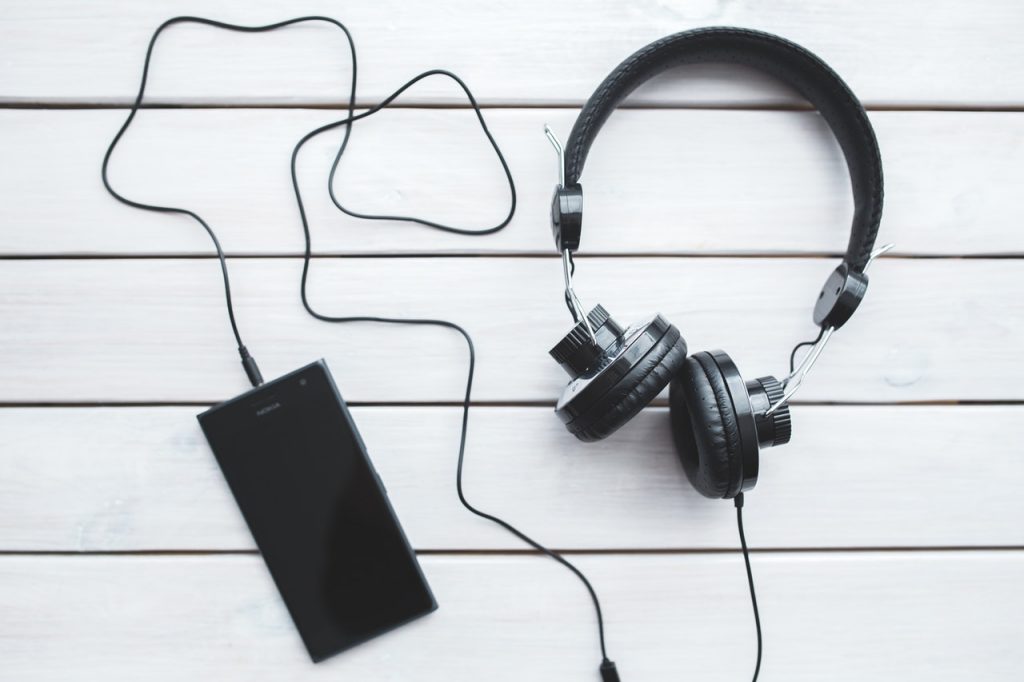If you’ve ever had trouble falling asleep at night, you may have put on sounds of the rain or ocean waves to help yourself relax. Maybe you even bought a white noise machine to drown out the noise from your neighbors or the street. While many people are familiar with white noise, there is a new color of noise gaining attention as deep sleep brain wave frequency: pink noise.

Understanding waves: the language of music and the brain
Waves exist in many different forms in nature, including the sounds that we hear and the brain waves that are needed for our neurons to communicate. Some forms of therapeutic brain stimulation even provide low levels of electric current through waves.
Every wave has two important characteristics:
- Frequency is how fast a wave is. Faster sound frequencies have a higher pitch, and slower frequencies have a lower pitch.
- Power is how strong or big a wave is. Higher power sound waves are louder, and weaker power waves are quieter.
What is white noise? What does it sound like?
White noise is a type of background noise that includes a wide range of frequencies. In white noise, all of the frequencies have similar power. In other words, the lower and higher pitches in white noise are almost the same volume. Because of this wide range, white noise is helpful for blocking out many types of sounds, like noisy traffic, loud neighbors, or hallway chatter.
White noise often sounds like a steady hum, similar to television static, a running fan, or air conditioning.
What is pink noise? What does it sound like?
Pink noise is another type of background noise with a wide range of frequencies, but the lower frequencies have more power than higher frequencies. This means that lower pitches are louder than higher pitches.
The deep sleep brain wave frequency pink noise patterns are often found in nature, such as the sound of rainfall, ocean waves, and leaves rustling.
How are pink noise and white noise different?
White noise uses a mix of sound frequencies to create a static-like sound. It can be intense and high-pitched, like a fan or a vacuum.
Pink noise uses a consistent frequency, or pitch, to create a more even, flat sound, like a steady rain, wind rustling through trees, or waves on a beach. Its added depth and lower waves filter out higher sounds. As a result, you hear more relaxing, lower-frequency sounds as deep sleep brain wave frequency.
Is pink noise better than white noise?
There is more research to support the use of white noise, as pink noise has only been studied recently. The emerging research around pink noise, however, suggests that there are some reasons why it may be more promising for brain healing:
- It can sound more soothing and be more calming for the nervous system than white noise.
- Our brain cells communicate through brain waves that follow a pattern similar to pink noise. Because pink noise can match our brain wave patterns, it may be more stabilizing for the brain.
- As our brains age, they produce more white noise and less pink noise. In other words, pink noise may be associated with younger and healthier brains.
Does pink noise help with sleep?
During sleep, our brains produce slower brain waves that allow the body and brain to enter a state of rest and restoration. There are fewer of the faster brain waves that occur during periods of focus and concentration.
Pink noise appears to amplify the power of the slower brain waves during deep sleep. When administered at night, it may help people fall asleep faster and get deeper, less fragmented sleep. This is one kind of deep sleep brain wave frequency.
Where to Get Pink Noise
You have many options for adding pink noise to your sleep routine. For example, you can:
- Get the Pink Noise program of the Color Noise from Brainwaves, which is a special deep sleep brain wave frequency, then play it as you go to sleep at night.
- Get a sound machine or noise generator that specifically uses pink noise. While this way is rather complex.
Sources:
https://www.chandramd.com/blog/pink-noise-benefits-sleep-memory